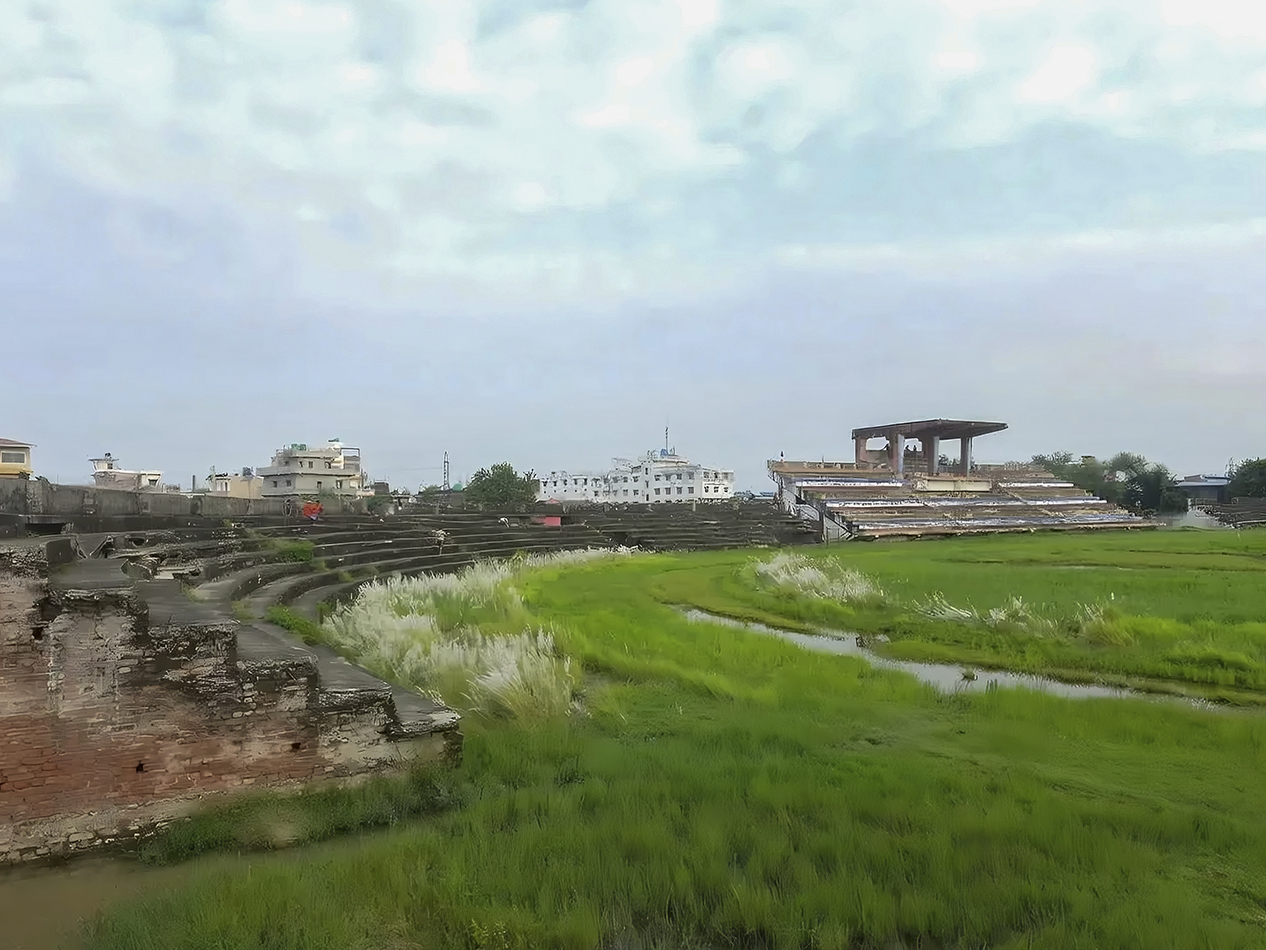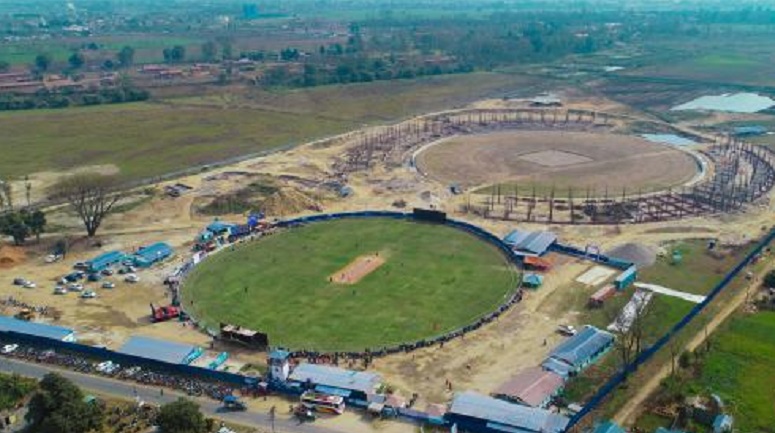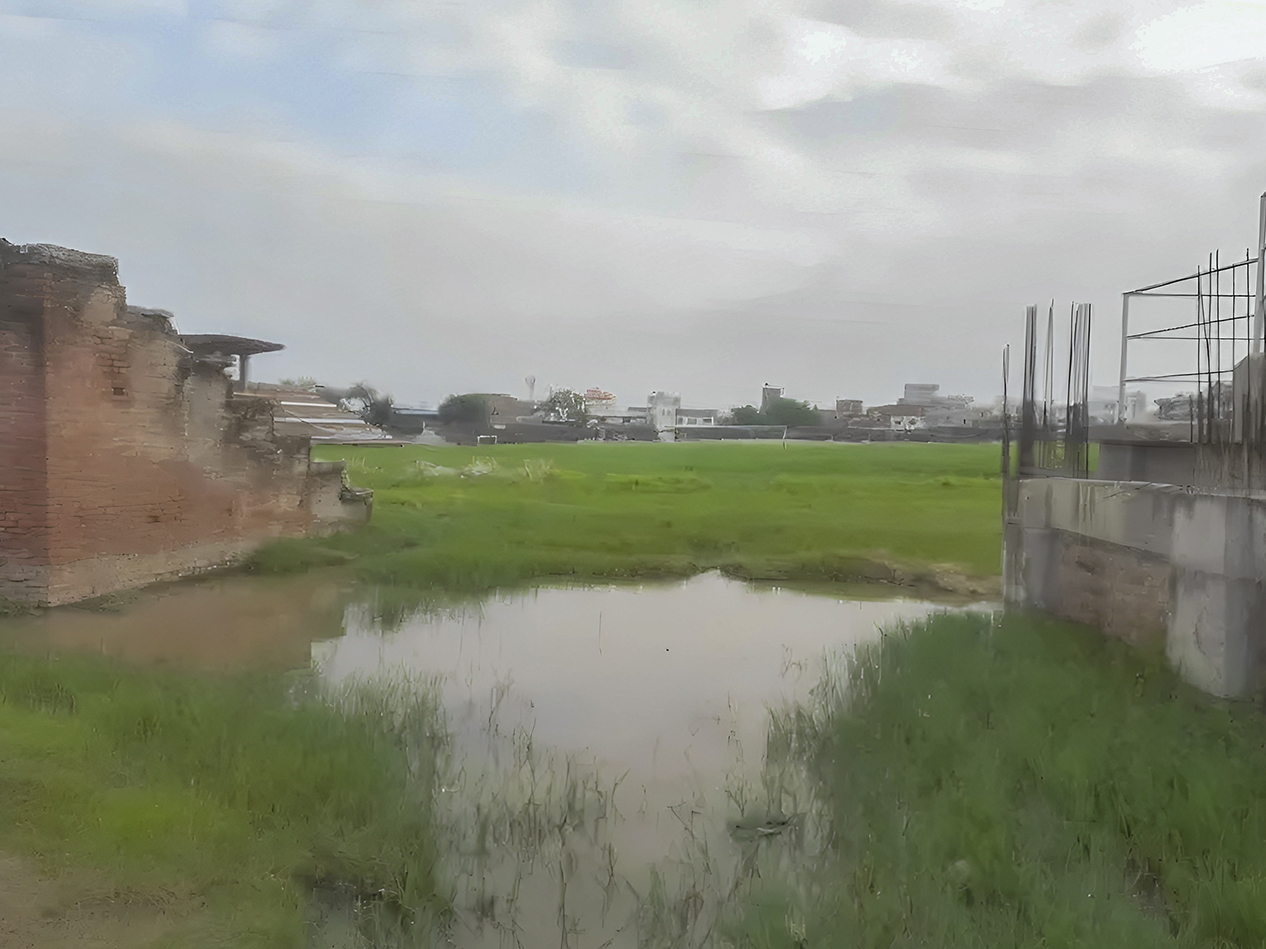

KATHMANDU: In Amarsingh ground, Pokhara, 67-year-old sports lover Rudum Bahadur Gurung never misses a game held in the city.
He recalls bursting into tears while watching the women’s football final of the 13th South Asian Games in 2019 at Pokhara Stadium.
It was not because Nepal lost 2–1 to India, but because, for the first time, an international sporting event was held outside Kathmandu Valley.
Seven events under the women’s category of SAG were hosted in Pokhara.
Now, five years later, Rudum is disheartened. His dream of Pokhara becoming an international sports hub has faded. Once bustling with sports events, the stadium has now fallen silent.
Except for the Aaha Rara Gold Cup football tournament, the 18,000-seat stadium lies empty, with the floor seats dismantled and unused.
The stadium has turned into a jogging ground for retired employees. “This is not the stadium we dreamed of. We wanted to see our sons and daughters play in the national jersey here,” Rudum laments.
Large infrastructures, little activity
Not only Pokhara but many other places across Nepal face a similar situation.
Without sports events, these infrastructures are becoming “white elephants.” Yet, the Ministry of Youth and Sports and the National Sports Council (NSC), which are responsible for nationwide sports activities, remain silent.
After federalism was implemented, the state spent lavishly on provincial capitals.
In Gandaki Province alone, one international stadium, five multipurpose covered halls, six semi-covered halls, and three football and cricket stadiums have been built.
Most of these remain inactive. In Lamjung, Tanahun, Baglung, Myagdi, and Manang, the constructions remain incomplete—pillars erected in some places, roofs missing in others, or stands left unbuilt.
Over 350 million rupees have already been invested, but the return is almost nil.
Bagmati Province is building a sports village on 23 bighas of land in Hetauda with an international-level cricket stadium, athletics track, football ground, and swimming pool.
In Koshi Province, a sports village named after former Prime Minister Girija Prasad Koirala is under construction in Baijanathpur, costing nearly 3 billion rupees.
The government allocated 6.08 billion rupees to sports in the fiscal year 2024/25, with 3.6 billion earmarked for development.
Karnali’s costly oreparation in limbo
For the 10th National Games in Karnali Province, around 2 billion rupees have already been spent on infrastructures in Surkhet. However, the event, scheduled for May 2025, has been postponed indefinitely due to political disputes.
Earlier, infrastructure built for the 7th National Games in Itahari (2016) and the 8th in Nepalgunj (2018) are still awaiting proper maintenance.
Some local sports lovers have even paid for renovations out of their own pockets.

NSC Member Secretary Tankalal Ghising admits that stadiums and halls have turned into “white elephants” due to the lack of competitions and insufficient budget to complete construction.
He blames the sports associations, saying most remain Kathmandu-centric and avoid organizing events outside the capital.
For instance, Nepal’s largest badminton hall is in Itahari, but the association still prefers Tripureshwar, Kathmandu, which already carries the burden of hosting most indoor games.
This congestion has even forced some planned tournaments, like the franchise basketball league, to remain on paper for years.
Abandoned and incomplete structures
Gandaki Sports Council’s Member Secretary Sridhar Sharma concedes that despite significant investment, the lack of competitions has left many infrastructures abandoned or incomplete.
He estimates 300–400 million rupees would be required to complete and maintain them.
Who is responsible for maintenance—the federal government or provinces? This confusion persists.
The Sports Development Act of 2020 attempted to define the roles of federal, provincial, and local levels, but poor implementation has left projects stuck in limbo.
In September 2023, all seven provincial member secretaries demanded that infrastructures in their provinces be handed over to them.
NSC temporarily transferred responsibility, but many provinces lacked the capacity to manage them effectively.
Madhes Province: Players in villages, stadiums on highways
According to the latest census, Madhes Province has the largest population, over 6.1 million.
Ideally, it should have the highest number of sports infrastructures. It has three multipurpose covered halls, an equal number of semi-covered halls, four stadiums, and more than five football and cricket grounds. Yet, most remain unused.
The Narayani Stadium, built in 1985, is the second largest in the country but has fallen into disrepair.
Local player Ajay Gupta says, “No competitions are held here. Even spectators have no place to sit.”
The adjacent cricket ground has turned into grazing land for cattle. Although the government planned to redevelop it into a multipurpose stadium with an estimated cost of 2.64 billion rupees, only partial construction of stands has been completed despite repeated budget allocations since 2020.
Most other facilities in Madhes remain locked after occasional short tournaments.
Provincial Sports Council Member Secretary Shivaji Gupta admits: “Players live in villages, but the halls are built near highways. This mismatch makes competitions difficult.”
With the 11th National Games slated to be held in Madhes Province, major investment is needed. However, looking at current conditions, its feasibility is doubtful.
Kathmandu-centric sports and players
The government aims to spread sports infrastructures across all 753 local levels of the country.
Ironically, most infrastructures outside Kathmandu lack players, while players continue migrating to the capital in search of opportunities.
Former international runner Hari Bahadur Rokaya explains: “We produce players but can’t even provide them basic nutrition. For career growth, they must move to Kathmandu.”
Although more than 210 sports associations exist under NSC, only 62 are recognized nationally, and almost all are Kathmandu-based.
NSC Infrastructure Chief Raju Shrestha says, “Kathmandu has limited facilities but too many players, while provincial infrastructures lie empty.”
Bagmati Province, despite having multiple covered halls, stadiums, and fields, still faces a shortage of proper practice venues. Even 70% of indoor competitions under NSC’s annual calendar are hosted in Kathmandu.

Misplaced priorities in infrastructure development
Nepal has participated in the Olympics and Asian Games for more than six decades.
It has played twice in the T20 Cricket World Cup and once in the Asia Cup.
The All Nepal Football Association (ANFA) aims to qualify for the Women’s Asian Cup by 2026 and the World Cup by 2031.
For such ambitions, functioning infrastructures are essential.
Bagmati Sports Council’s Member Secretary Deepak Lama points out: “We need to build sports infrastructures based on proper priorities and population needs. Without this, stadiums and halls will continue to exist without proper use.”
Examples abound—semi-covered halls in Rasuwa and Sindhuli remain unused.
Ultimately, the biggest question remains, who will take responsibility for running and maintaining these infrastructures—federal, provincial, or local governments?
Until then, Nepal’s sports infrastructures risk remaining nothing more than “white elephants.”